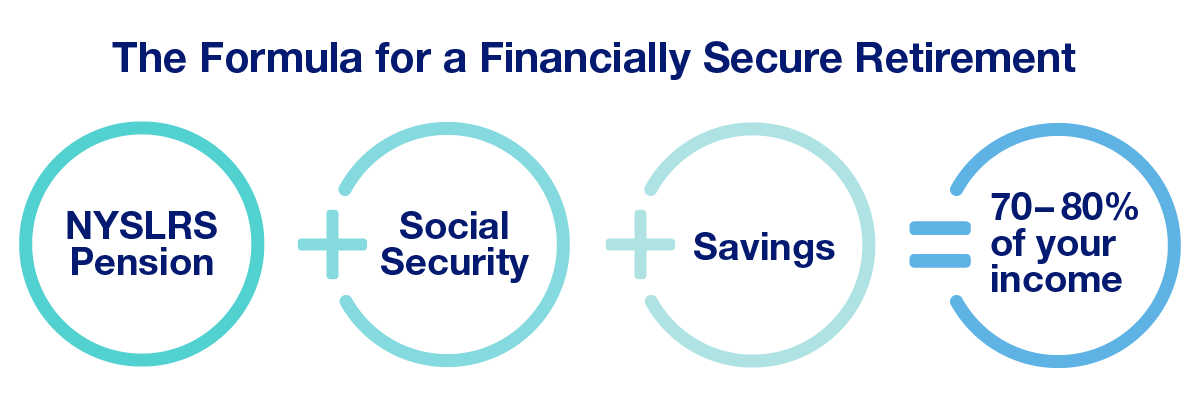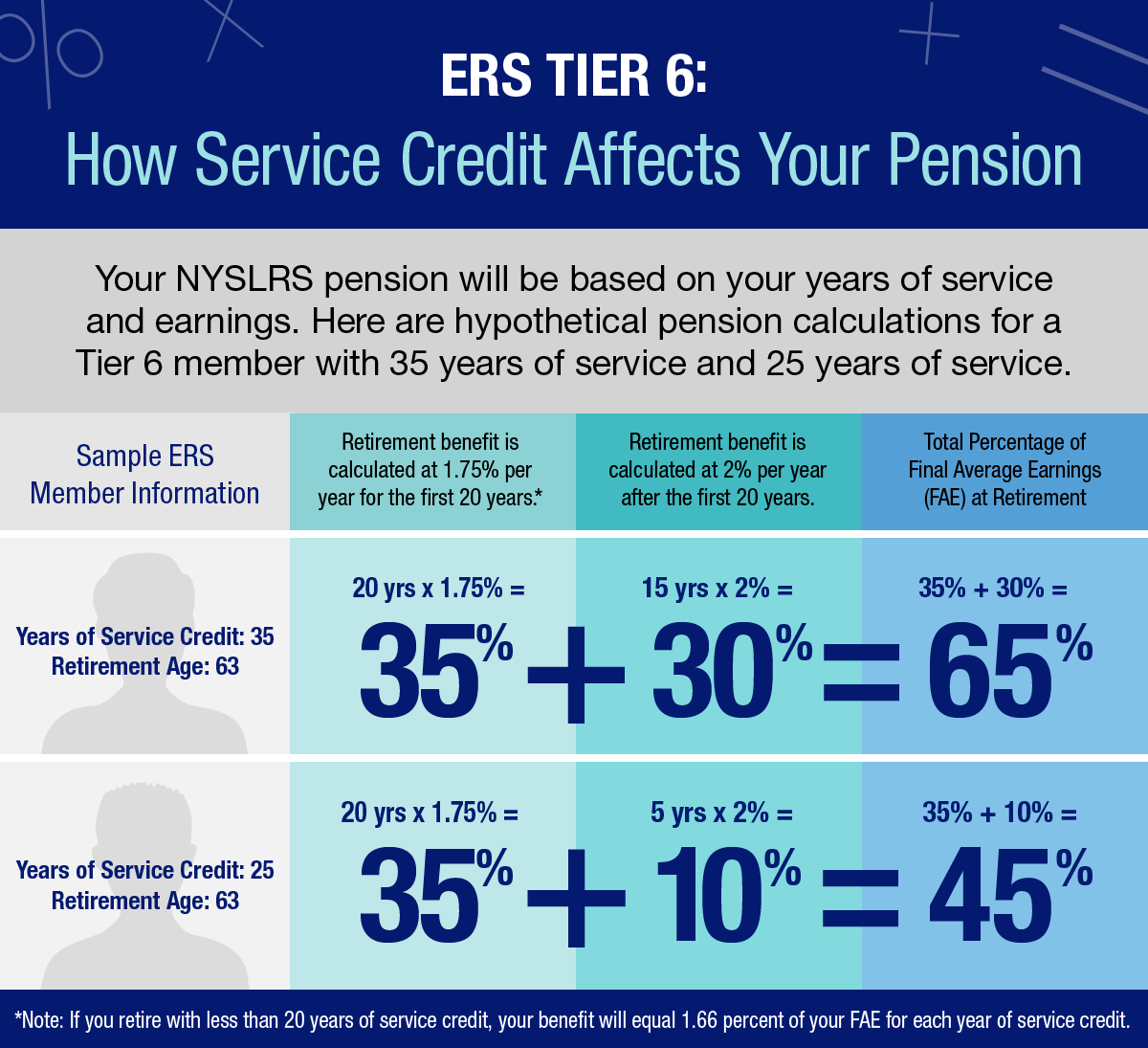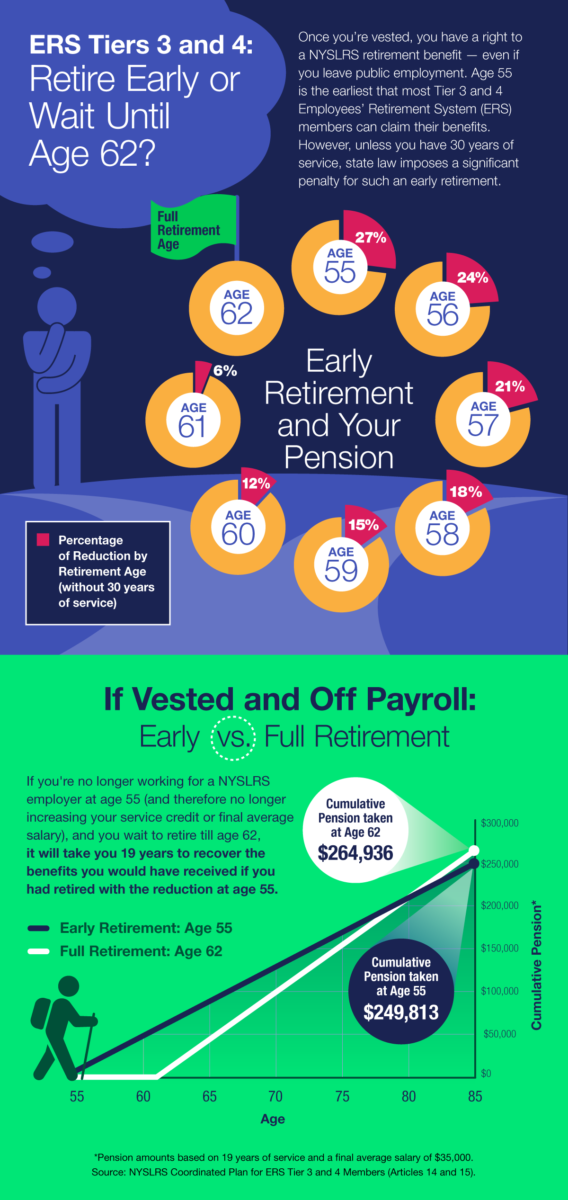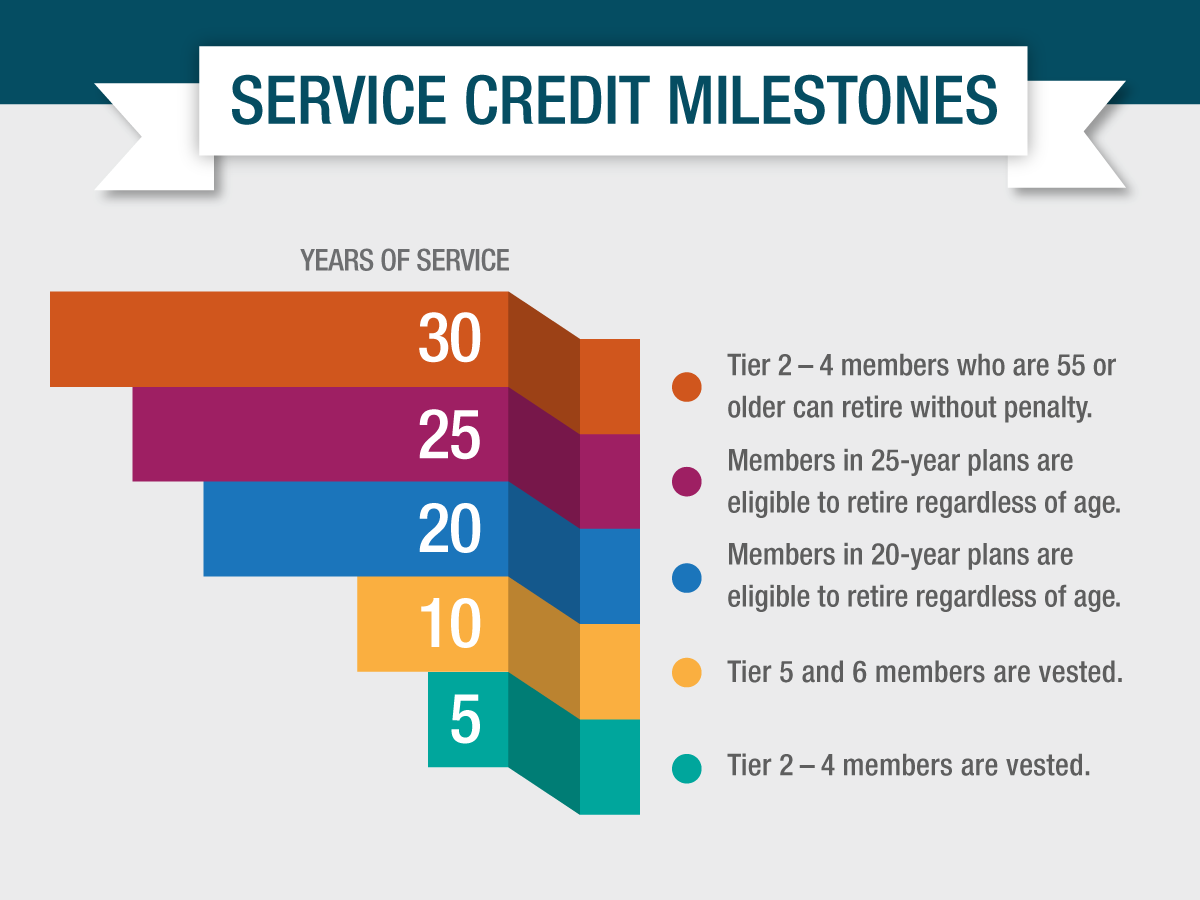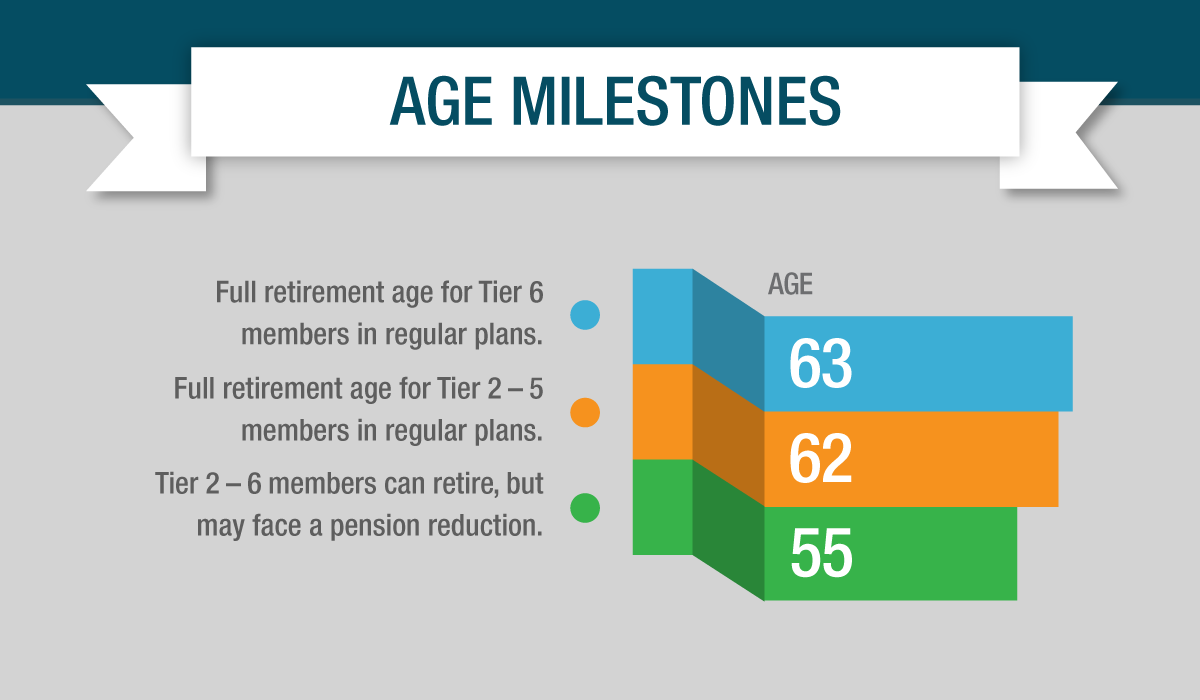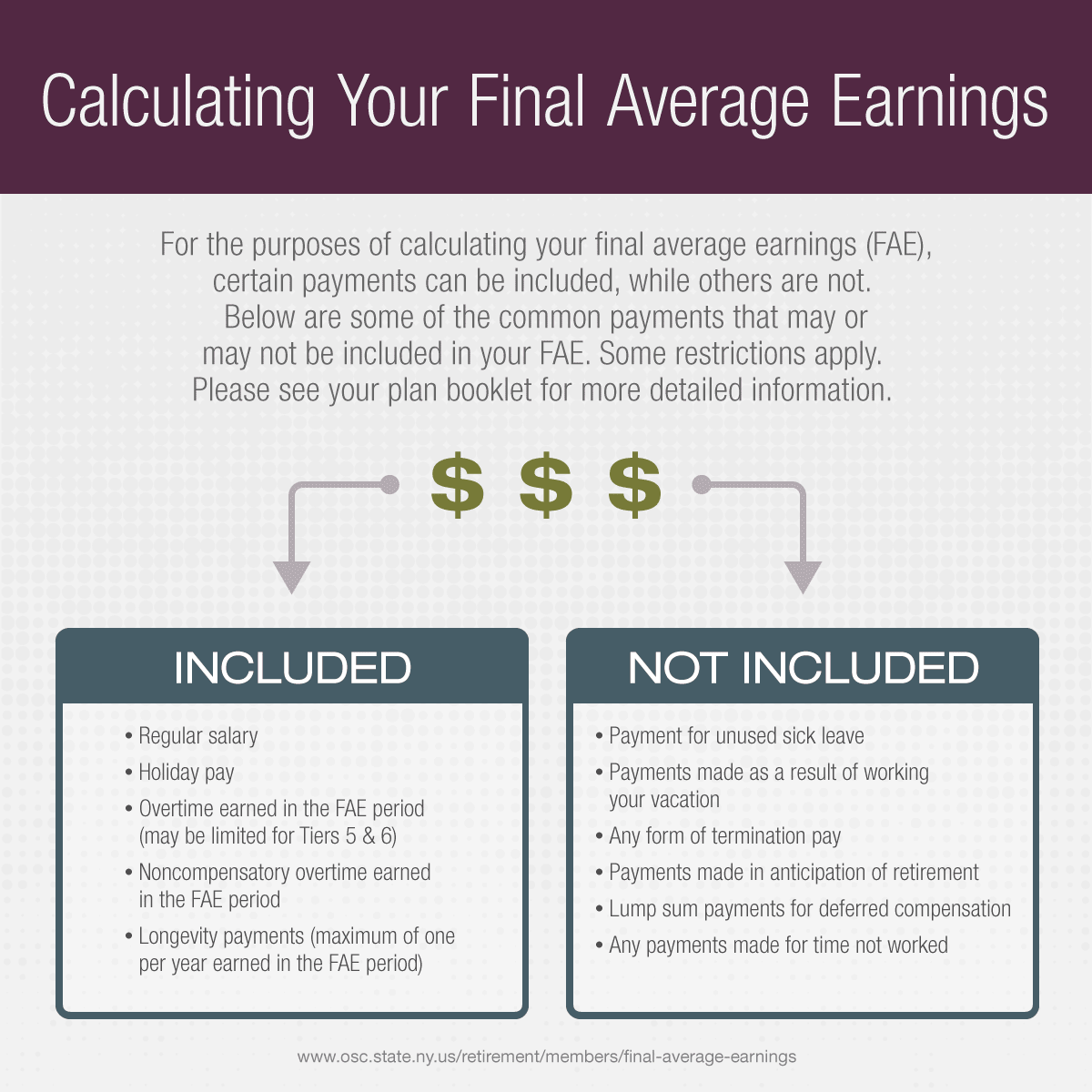Knowing your member milestones can help you plan for your retirement. Most Employees’ Retirement System (ERS) Tier 3 and Tier 4 members (unless they are in special retirement plans) retire under the Article 15 retirement plan. If you’re covered by this retirement plan, you have a set of member milestones that affect how your pension is calculated and how much you’ll receive at retirement.
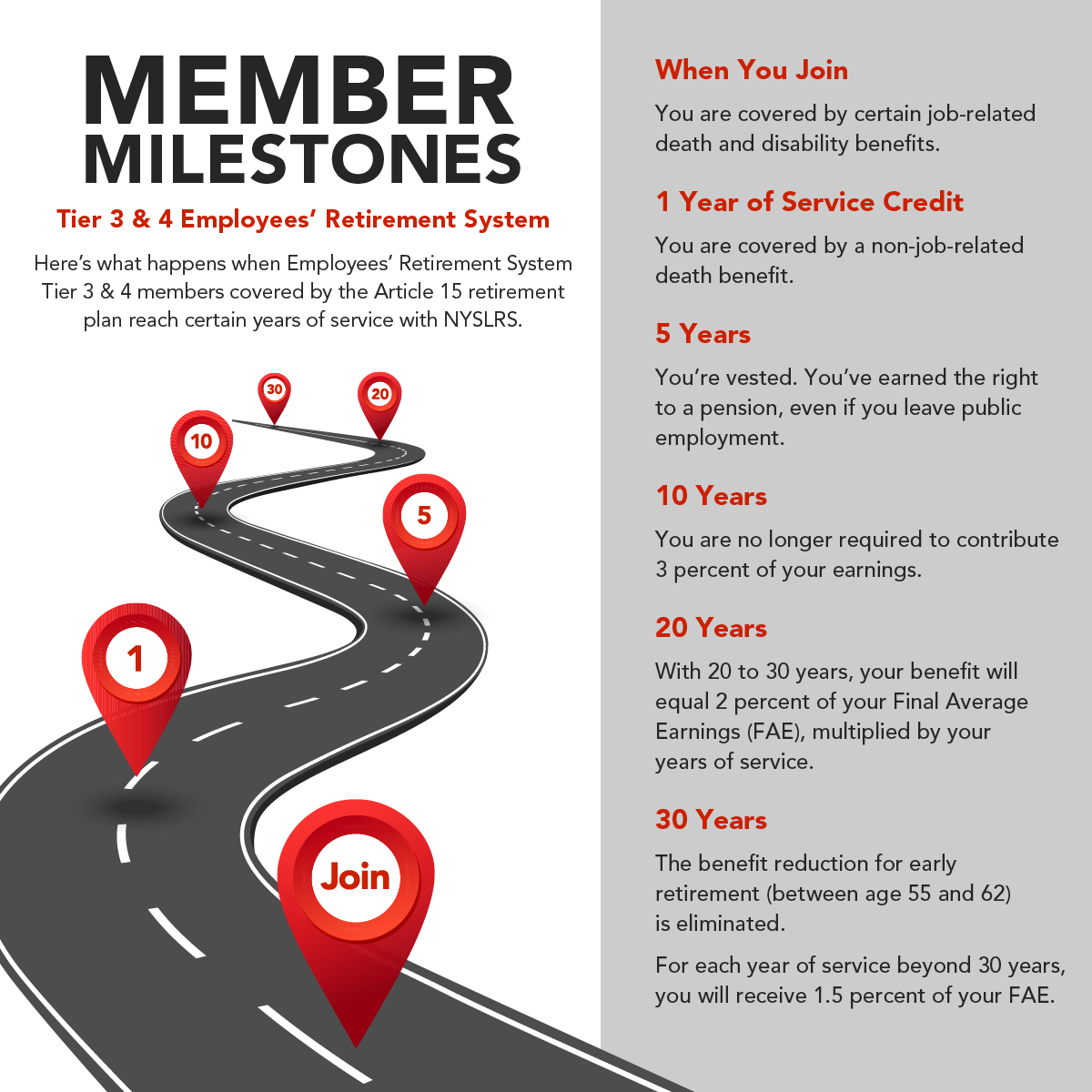
Here are some important Tier 3 and 4 milestones:
- With ten years of service credit, you would be eligible to apply for a non-job-related disability benefit if you are permanently disabled and cannot perform your duties because of a physical or mental condition.
- Also with ten years of service credit, your beneficiaries may be eligible for an out-of-service death benefit if you leave public employment and die before retirement.
- With ten years of service credit, you are no longer able to withdraw your membership and receive a refund of your contributions if you leave public employment.
- You are eligible to retire once you are age 55 and have five years of service credit. However, there would be reductions to your benefit if you retire before age 62 with less than 30 years of service credit.
- You can retire with full benefits at age 62.
- If you retire with less than 20 years of service credit, the benefit is 1.66 percent of your final average earnings (FAE) for each year of service.
- If you retire with 20 to 30 years of service credit, the benefit is 2 percent of your FAE for each year of service.
- If you retire with more than 30 years of service credit, the benefit is 2 percent of your FAE for each year of service up to 30. For each year of service beyond 30, you will receive 1.5 percent of your FAE.
Note: The law limits the final average earnings of all members who joined on or after June 17, 1971. For example, for most members, if your earnings increase significantly during the years used in your FAE, it’s possible that some of those earnings may not be used toward your pension. The specific limits vary by tier. Visit our Final Average Earnings page for more information.
The amount of your pension also depends on several factors, including your years of service credit and your age when you retire. Read our blog post, Tier 3 & 4 Members: When Is The Right Time To Retire?, for information to consider. You can also estimate your pension in Retirement Online and enter different retirement dates to see how those choices would affect your benefit.



